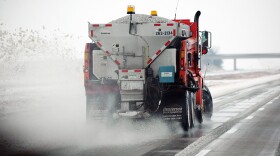-
Quick-growing blooms of bacteria and algae have long been a hazard in lakes and rivers, because of the toxins they produce. Fueled in part by agricultural runoff, these blooms are also threatening public water systems, making water temporarily unusable, and forcing some cities and towns to take costly preventive measures.
-
Settlement payments from chemical companies are helping cities pay for expensive PFAS removal technology. But local leaders say the dollars often fall short of covering the full costs to clean up drinking water.
-
If you're thirsty for knowledge, it's time to drink up: public water supplies are federally required to make water quality reports available by the end of June.
-
The Trump administration wants to rewrite the definition for what counts as protected ‘waters of the United States.' The rule has caused frustration among farmers, but environmental attorneys worry a change could lead to more pollution.
-
Officials with Leprino say every precaution is being taken to protect East Lubbock’s environment. Residents say they’ll believe it when they see it. Beyond the lake, the conflict speaks to a longstanding issue in the city.
-
The water in these four unincorporated communities near Lubbock has been undrinkable for years, residents say. They hope to win $3 million in state grants to improve their systems.
-
A contentious debate has erupted over who is responsible for plugging the wells.
-
Regulators want to know the risks that flawed welding or shifting ground could pose for more breaks on the Keystone, which has spilled repeatedly since 2011.
-
Scientists in Kansas and Iowa are working on a greener path forward. In the meantime, experts offer tips for public agencies and homeowners to use salt smarter.
-
Crews in north-central Kansas continue to remove oil from several miles of Mill Creek that are now blocked off from the rest of the creek. Contamination downstream is decreasing.

Play Live Radio
Next Up:
0:00
0:00
Available On Air Stations








